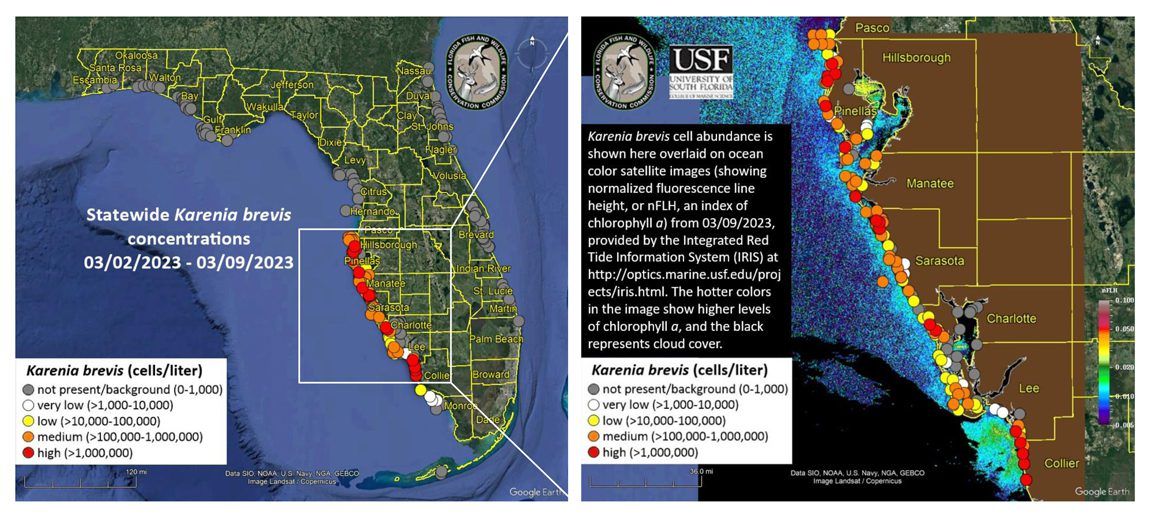The red tide report

Over the past week, the red tide organism Karenia brevis was detected in 157 samples along Florida’s Gulf Coast. Bloom concentrations (>100,000 cells/liter) were present in 89 samples: two in and offshore of Pasco County, 24 in and offshore of Pinellas County, eight in Manatee County, 32 in and offshore of Sarasota County, six in Charlotte County, nine in Lee County, and eight in Collier County. In Southwest Florida over the past week, K. brevis was observed at background to high concentrations in and offshore of Pinellas County, low to high concentrations in Manatee County, background to high concentrations in and offshore of Sarasota County, background to high concentrations in Charlotte County, background to high concentrations in Lee County, and very low to high concentrations in and offshore of Collier County. Reports of fish kills suspected to be related to red tide were received along the Florida Gulf Coast over the past week from/offshore of Pasco, Pinellas, Manatee, Sarasota, Charlotte, Lee, Collier, and Monroe counties. For more details, please visit myfwc.com/research/saltwater/health/fish-kills-hotline/ and visitbeaches.org/.
Also over the past week, respiratory irritation suspected to be related to red tide was reported along Florida’s Gulf Coast via the Beach Conditions Reporting System and/or the Fish Kill Hotline at multiple sites from/offshore of Pasco, Pinellas, Manatee, Sarasota, Charlotte, Lee, Collier, and Monroe counties. For recent and current information at individual beaches, please visit visitbeaches.org/ and for forecasts that use FWC and partner data, please visit habforecast.gcoos.org/.
Forecasts by the USF-FWC Collaboration for Prediction of Red Tides for southern Pasco County to northern Monroe County predict variable movement of surface and subsurface waters over the next 3.5 days.









